There was no doubt that Namco and Sega had created the first cult of speed for arcade visitors. Pole Position and OutRun would become elevated to icon status by many long-time gamers. If there were a videogame hall of fame those two would undoubtedly be the first racing games inducted. While pursuing 3D technology for the arcade both Sega and Namco had to convince fans that future titles would all be in that format. It would be a tough going considering the visual quality that many sprite based games brought. Surely the studios could continue to push the boundaries of sprite-based engines for another few years based on a title like F1 Super Lap alone. That would not be the case. Once 1990 hit there seemed to be an internal mandate to get Sega to change its arcade development focus. The consoles could continue to rely on sprite-based ports for a little while longer but even those would have to give way to 3D console technology very shortly.
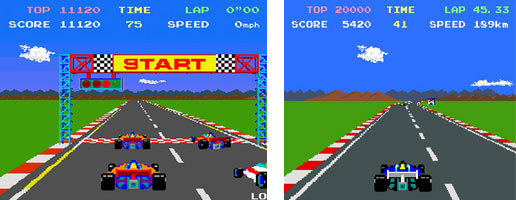
Home computers had come down in price through the '80s and some of the more innovative 3D racing games were available at home instead of the arcade. The arcade publishers knew that they had to change with technology or be left behind. As far as I can remember Namco was the first studio to get a 3D racing game, made out of polygons instead of sprites, in arcades.
Winning Run was a rare game from 1988. It predated Atari's Hard Drivin' 3D game by one year and Sega's Virtua Racing by four years. It certainly was ahead of its time. The graphics did look more advanced than what was available on home PCs but not by much. The game looked and played much more like a sim than an arcade racer and that was possibly what kept it from becoming a bigger success.
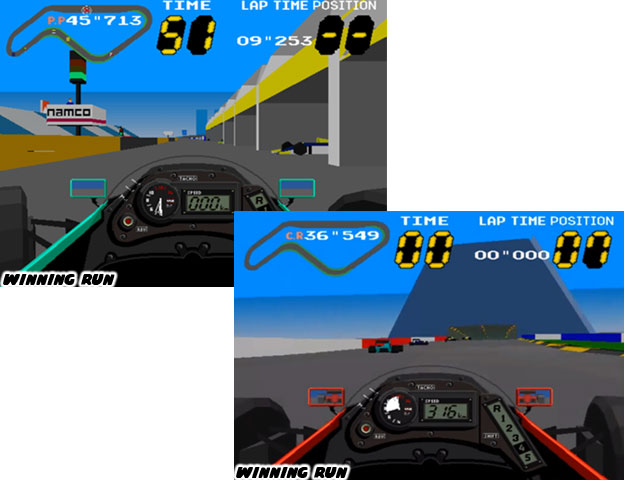
Arcade racing games were supposed to have some sense of realism but not be completely rooted in reality. Not to burst the bubble of many long-time players but the best arcade racing games were designed by dumbing down the driving experience. Driving a real Formula-1 car could be very difficult. Expecting to be able to fight through a field of other racers while keeping the car on the course could seem impossible for a newbie. Instead studios like Sega and Namco allowed much room for error. They programmed in computer AI that could hold back or charge ahead depending on how well a driver performed. They also limited the amount of oversteer and understeer so that the cars would stay on course, often no matter how fast players were going. Winning Run changed a lot of those rules. It could be somewhat forgiving but was a much more realistic experience than other racing games. It certainly was not a 3D version of Pole Position.
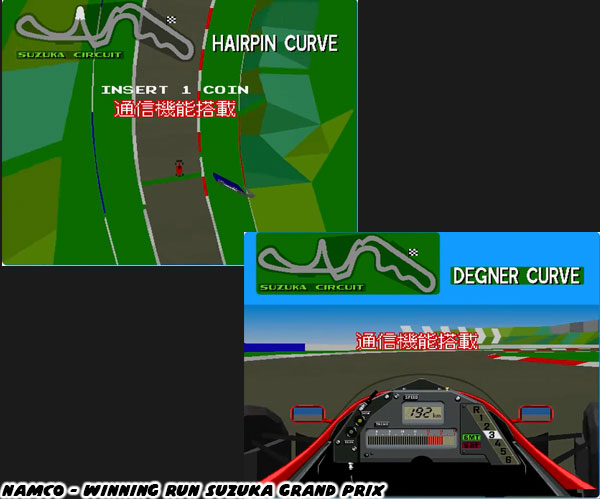
Players worked through five gears on a simple polygonal course. The high walls made it easy for developers to limit the draw distance of the course. As advanced as 3D graphics were becoming they still had a long way to go before they could render scenery and other details with any sort of fidelity. A few buildings and grandstands were all that the player could see over the fence. The car models themselves were very rudimentary. They had rough flat shapes, like a simple paper craft model. Although they did have a few colors on the bodies to signify the team livery none of the cars had sponsor stickers or other identifiable details. The other racing games from that era had big beautiful sprite-based cars. Each sprite model had dozens of colors, sponsor stickers and other details that made them look very realistic. The sprite-based games even had multiple teams and sponsors, each with their own detailed racers. The tracks were often decorated with sponsor logos as well and even hundreds of sprite based fans filling the grandstands.
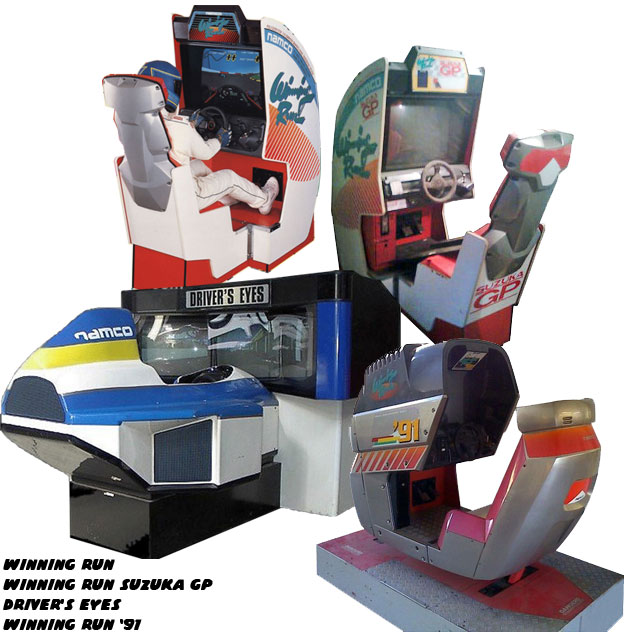
Aside from the graphics which failed to wow audiences and the control which was too sim for many there were other things that Winning Run had going against it. The game must have been extremely expensive and extremely delicate. In the dozens of arcades that I visited throughout my life there were less than a handful of Winning Run machines that I actually saw. Of those machines very few were working so I only had a chance to play it a few times. Despite my observations the game must have sold enough units for Namco to start a franchise. A year after it debuted the game had its first real track for players to try out. Winning Run Suzuka GP came out in 1989. The graphics and control hadn't been improved but at least the turns and rises and drops in elevation were fairly identical to the famous Japanese speedway. A three-screen build called Driver's Eyes came out in 1990. I think I saw three of those cabinets in my lifetime. They were huge and expensive for the time. However being the racing fan that I was I did enjoy the immersive experience the game provided. The graphics were still very rough but the expanded field of view had given me more of a sense of momentum and acceleration than any other racing game of the era.
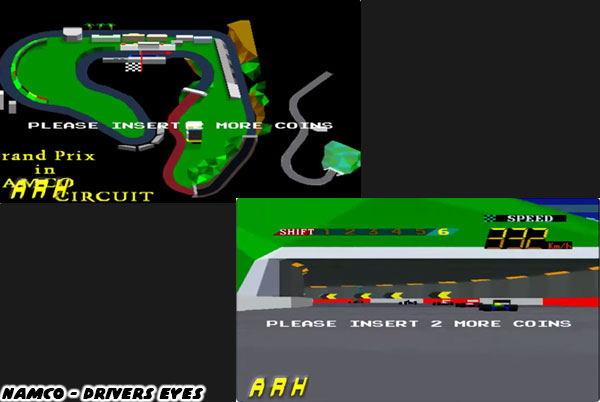
Namco had done an amiable job bringing arcade racing out of the dark ages and into 3D. The franchise would make it to see a new decade but go no further. Winning Run '91 was the last game in the series. It had finally had the boost in the graphics and control department that arcade visitors had been expecting but it was too little too late. Other franchises had caught their attention and the home console was becoming a real drain on the arcade market. The PC especially was providing fun 3D racing experience as well. Thankfully Capcom had introduced Street Fighter II at this time and gave the arcade industry a much needed booster shot. The owners of the arcades were still hoping to see a racing experience that would recapture the imagination of the public in the same way that Pole Position and OutRun had done years earlier. They wouldn't have to wait long. Sega had something brewing in the wings. The next blog will look at this title.
As always if you would like to sponsor me
please visit my Patreon page and consider donating each month, even as little as $1 would help make better blogs and even podcasts!










I don't even recall seeing this game not even able to blame my bias toward SEGA cause first and formost I would try to look for new/ never seen before games before spending my money in a game room.
ReplyDelete